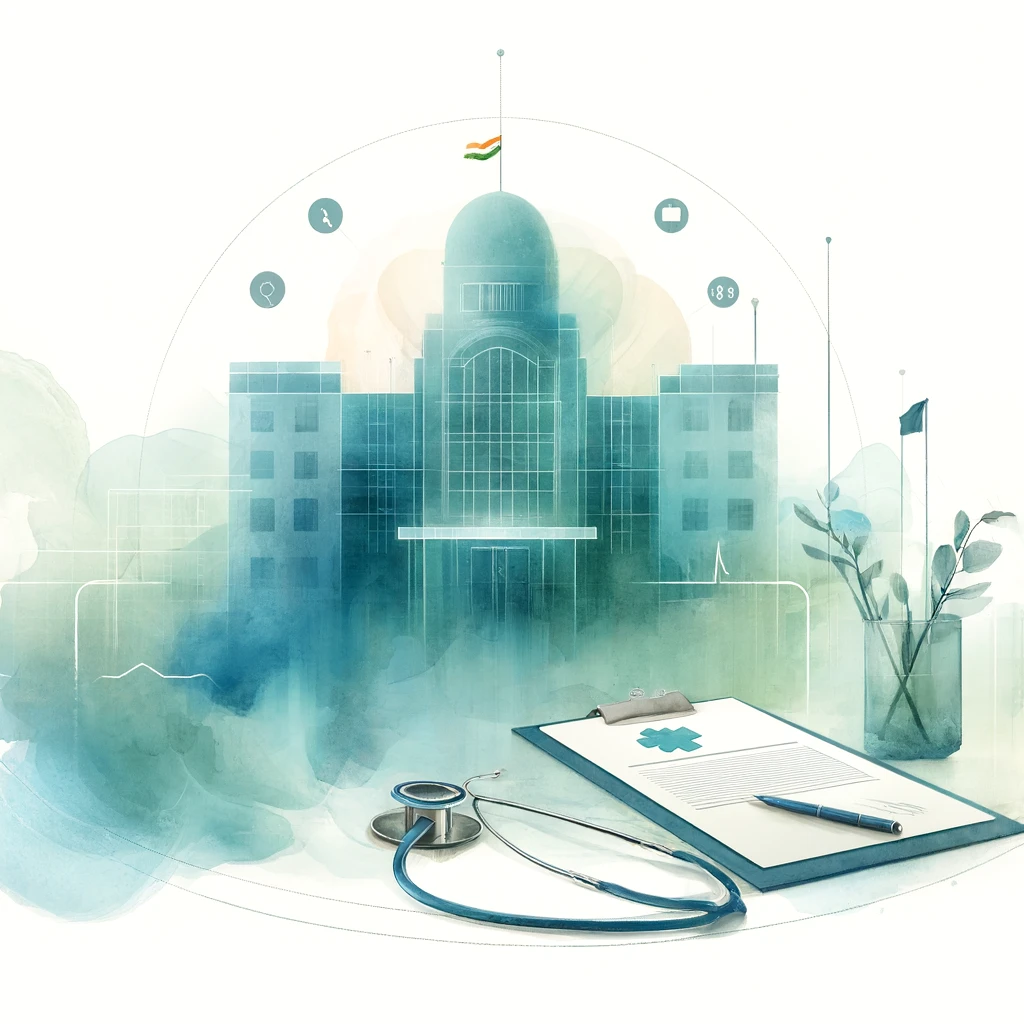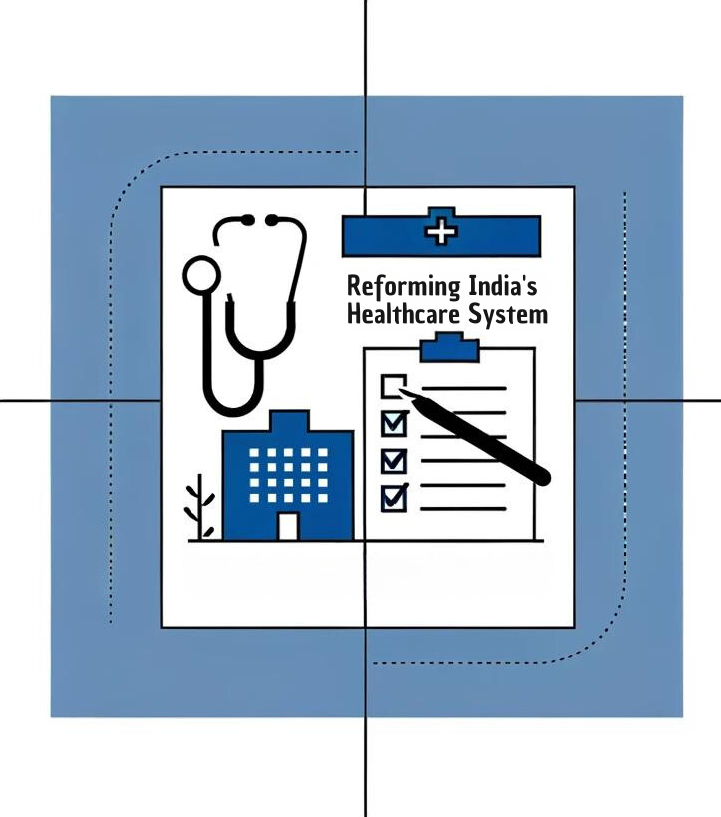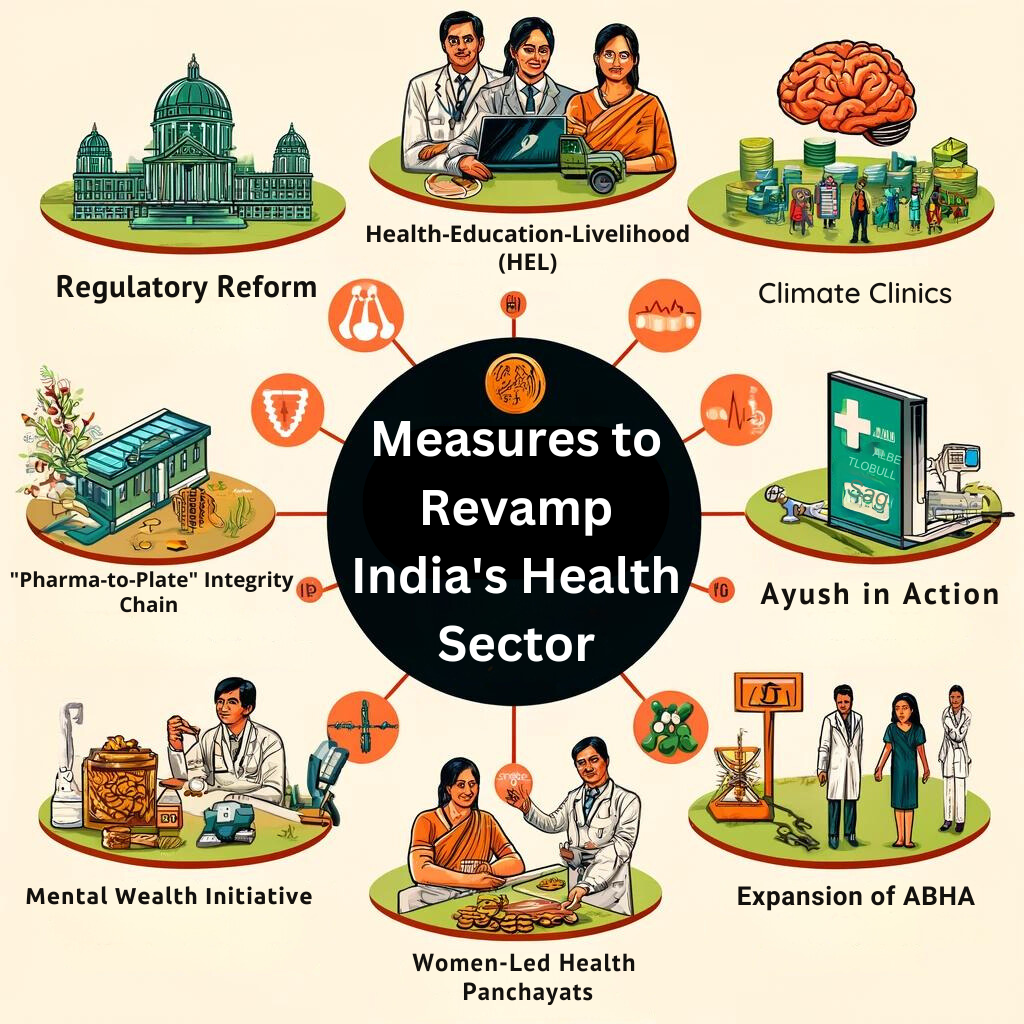India’s healthcare system is a vast and intricate network, juggling public and private facilities to serve its massive population. While the private sector shoulders a substantial burden of delivering care, recent incidents like the fire at a Delhi Nursing home highlight a critical issue in India’s healthcare system: the failure of healthcare regulations.

Origin of the Article
This editorial is based on “Health regulations need a base to top approach” which was published in The Hindu on 07/06/2024. The article brings to light the rise of India’s gaming sector and the challenges associated with it.
Relevancy for UPSC Students
Understanding India’s healthcare challenges is crucial for UPSC aspirants. It covers topics relevant to GS Paper 2 and GS Paper 3, focusing on government policies, interventions, and healthcare budgeting. Analyzing these issues helps students prepare for questions on policy effectiveness and public health.

Why in News
The topic of healthcare regulations is currently in the spotlight due to recent tragic incidents and systemic flaws in India’s healthcare system. This is crucial for UPSC aspirants as it links directly to previously asked questions on healthcare reforms, public health expenditure, and regulatory frameworks. Understanding the complexities and challenges of healthcare regulation in India can provide valuable insights for answering questions on governance, policy interventions, and sustainable development in the UPSC civil services exam.
Framework of Healthcare Regulation in India
India’s healthcare regulatory framework has evolved significantly over time, reflecting the changing needs of its population. From colonial-era regulations to contemporary policies, the system aims to ensure quality and equitable healthcare. Despite multiple laws and regulatory bodies, the healthcare system faces challenges in effective implementation and enforcement, highlighting the need for continuous reforms.
Historical Context
Colonial Times: During the colonial era, healthcare regulations were fragmented and often influenced by British administrative needs. The Madras Public Health Act of 1939 is a notable example, focusing on public health concerns in specific regions rather than a comprehensive national strategy.
Bhore Committee Report (1946): This pivotal report called for the integration of preventive, promotive, and curative health services. It recommended the establishment of Primary Health Centres (PHCs) in rural areas to ensure accessible healthcare for all, laying the foundation for India’s public health infrastructure.
Economic Liberalization (1991): The economic reforms of 1991 spurred the growth of private healthcare, necessitating updated regulations to manage this expanding sector. The influx of private players created a need for stringent oversight to ensure quality and accountability in healthcare delivery.
Key Related Bodies
Ministry of Health and Family Welfare (MoHFW): This central body is responsible for formulating overarching healthcare policies and ensuring their implementation across the nation. It plays a critical role in coordinating efforts between various stakeholders in the health sector.
National Medical Commission (NMC): Established through the NMC Act of 2019, this body regulates medical education and licensing. It replaced the Medical Council of India to enhance transparency and accountability in medical practices and education.
Others: The Nursing Council and the Pharmacy Council are other essential regulatory bodies. They ensure standards in nursing and pharmacy education and practice, contributing to the overall quality of healthcare services.
Major Regulatory Laws and Policies
- Pre-Conception and Pre-Natal Diagnostic Techniques Act, 1994: This law aims to prevent female foeticide by regulating diagnostic techniques that could be misused for sex determination, thereby addressing gender imbalances.
- Clinical Establishments (Registration and Regulation) Act, 2010: This act mandates the registration of all clinical establishments and sets standard treatment guidelines to ensure uniformity and quality in healthcare services.
- Drugs and Cosmetics Act, 1940: It regulates the import, manufacture, distribution, and sale of drugs and cosmetics to ensure their safety, efficacy, and quality.
- Consumer Protection Act, 1986: Though not initially inclusive of healthcare, a landmark Supreme Court judgment extended its provisions to cover healthcare services, providing a legal recourse for patients.
- National Health Policy, 2017: This policy envisions universal health coverage, focusing on preventive and promotive health, and aims to improve the overall health infrastructure and outcomes.
Major Challenges Related to India’s Healthcare System
India’s healthcare system faces multifaceted challenges that hinder its effectiveness and equity. These issues range from financial constraints to systemic inefficiencies, affecting the overall delivery of healthcare services.
Inadequate Public Health Expenditure
Despite being the world’s fifth-largest economy, India’s healthcare expenditure remains critically low at 2.1% of GDP in FY23. While India supplies 20% of the world’s generic drugs, its citizens face a high out-of-pocket expenditure of 47.1%, indicating a significant gap in public health provisioning.
Urban-Rural Healthcare Divide
India’s healthcare infrastructure disproportionately favors urban areas, creating a ‘two-tier’ system. Despite 65% of the population residing in rural areas, only 25-30% of hospitals are accessible to them. This disparity challenges India’s constitutional promise of equality in healthcare access.
Silent Epidemic of Non-Communicable Diseases (NCDs)
NCDs account for 64% of India’s disease burden, with diabetes being a significant contributor. In 2019, 77 million Indians had diabetes, projected to rise to 134 million by 2045. Public health strategies remain disproportionately focused on communicable diseases, leaving the NCD burden inadequately addressed.
Mental Health Blind Spot
India’s mental health crisis is severe, with only 0.75 psychiatrists per 100,000 people and a mere 0.05% of the health budget allocated to mental health. This neglect results in India grappling with 36.6% of global suicides, highlighting the urgent need for mental health reforms.
Digital Divide in Telemedicine
The COVID-19 pandemic highlighted the potential of telemedicine but also exposed the digital divide. Rural areas, with limited internet access, are often left out, widening the gap in healthcare accessibility.
Climate Change: The Overlooked Health Determinant
Climate change poses significant health risks, with 1.67 million deaths in India attributed to air pollution in 2019. Heatwaves and their impact on crop yields directly affect nutrition, emphasizing the need to address climate change as a health crisis.
Governance Conundrum
India’s healthcare governance is riddled with bureaucratic challenges. Over 50 approvals are often required under various regulations, creating a bureaucratic nightmare. Prioritization of large corporate hospitals often neglects smaller clinics and nursing homes.
Pharmaceutical Paradox
India, known as the “pharmacy of the world,” faces a credibility crisis. The 2022 cough syrup tragedy in Gambia highlights issues within the pharmaceutical sector, jeopardizing its global reputation and domestic healthcare efficacy.
Neglect of Preventive and Primary Care
The healthcare system’s focus on curative, hospital-based care overshadows the importance of preventive and primary care. This imbalance increases healthcare costs and burdens the system with preventable conditions.
Measures to Revamp India’s Health Sector
Comprehensive reforms are necessary to address the systemic issues plaguing India’s healthcare sector. Innovative solutions and strategic initiatives can enhance the effectiveness and equity of healthcare delivery.

Regulatory Reform with Risk-Based Approach
Implementing a tiered regulatory system based on the complexity and risk of healthcare facilities can streamline approvals and ensure stringent oversight where necessary. This approach focuses on outcome-based measures like patient satisfaction and infection rates.
Health-Education-Livelihood (HEL) Campuses
Establishing integrated campuses in rural areas can address multiple needs simultaneously. These campuses would combine community health centers, skill development, and health-tech incubators, boosting local economies and healthcare human resources.
“Pharma-to-Plate” Integrity Chain
A blockchain-based system to track pharmaceuticals from production to patient consumption can combat counterfeit drugs. A global “TrackMeds” app could help verify medication authenticity, enhancing the credibility of Indian pharma products.
Mental Wealth Initiative
Reframing mental health as an economic asset and providing corporate tax breaks for mental health programs can incentivize better mental health practices. Training local health providers in basic counseling can make mental health resources more accessible.
Ayush in Action
Integrating AYUSH practitioners into allopathic settings and introducing wellness programs in schools and workplaces can promote holistic healthcare. This integration can help prevent NCDs and improve mental health.
Climate Clinics
Deploying mobile clinics in climate-vulnerable areas and upgrading PHCs to be climate-resilient can address the health impacts of climate change. These clinics can also serve as weather stations and provide vital health data for proactive management.
Expansion of ABHA
Nationwide expansion of Ayushman Bharat Health Accounts can rationalize healthcare data and enable personalized preventive care. Utilizing artificial intelligence for public health strategies can improve healthcare outcomes.
Women-Led Health Panchayats
Empowering women in local health governance can enhance rural health outcomes. Women-led councils can audit facilities, allocate funds, and organize health events, promoting better health governance and community participation.
Conclusion
India’s healthcare system stands at a pivotal crossroads. Addressing the multifaceted challenges requires a holistic, inclusive approach that bridges regulatory gaps and fosters equitable access. By integrating innovative solutions and reinforcing the healthcare framework, we can ensure that every citizen enjoys the right to quality healthcare. It’s not just a policy imperative but a moral obligation for a healthier, more resilient India.
| UPSC Civil Services Examination, Previous Year Question (PYQ) Mains Q. Public health system has limitations in providing universal health coverage. Do you think that the private sector could help in bridging the gap? What other viable alternatives would you suggest? (PYQ- 2015) Q. Analyze the impact of bureaucratic inefficiencies on the implementation of health policies in India. Provide examples to illustrate your points. Suggest measures to streamline bureaucratic processes in the health sector. |


